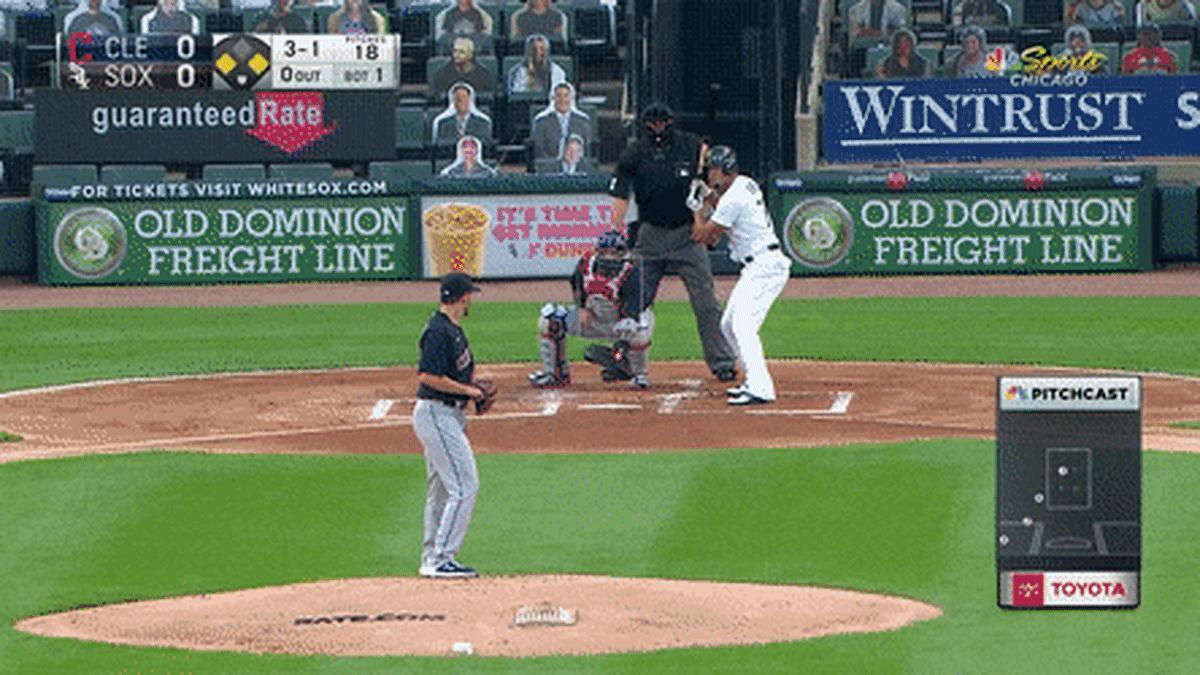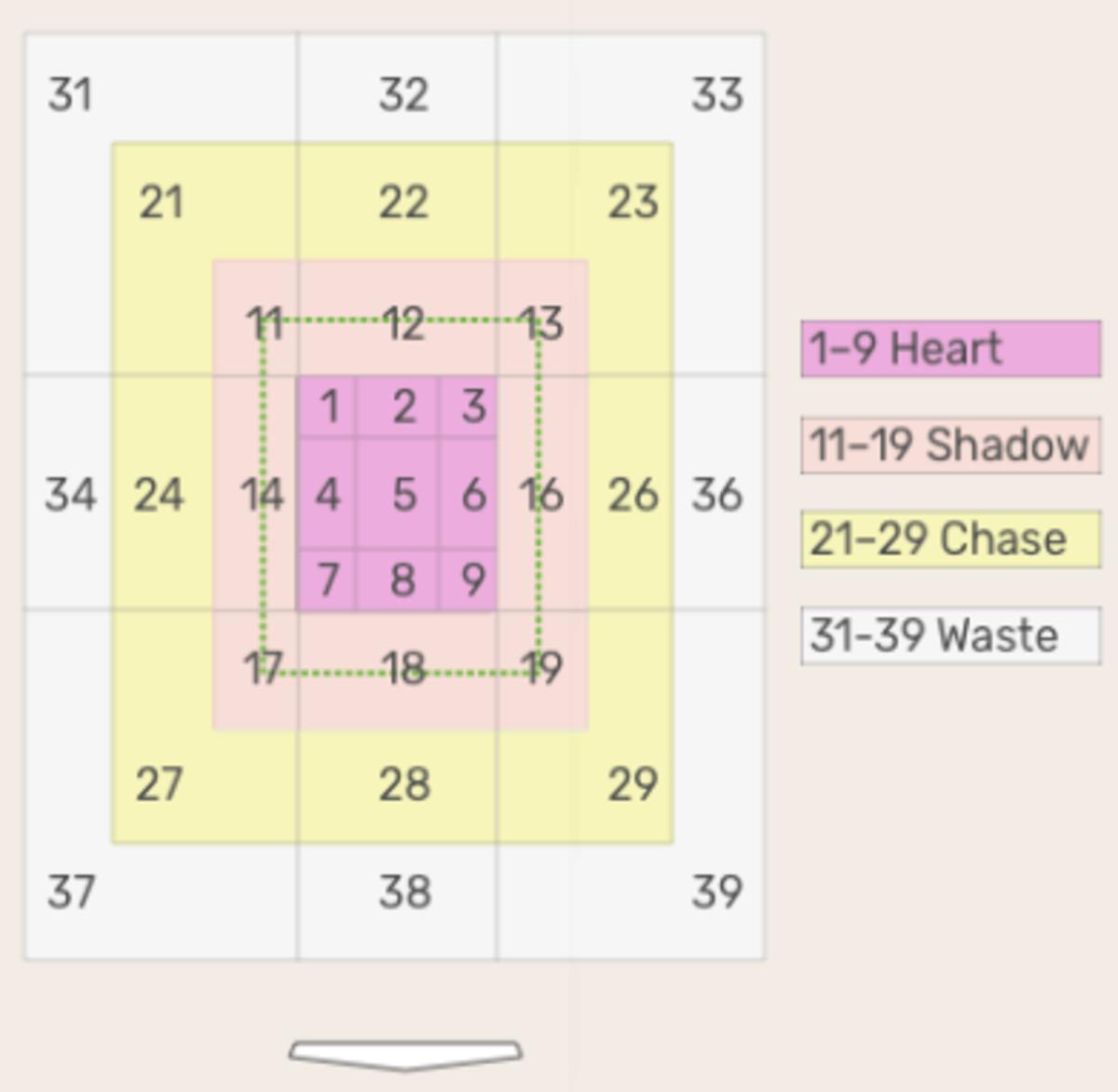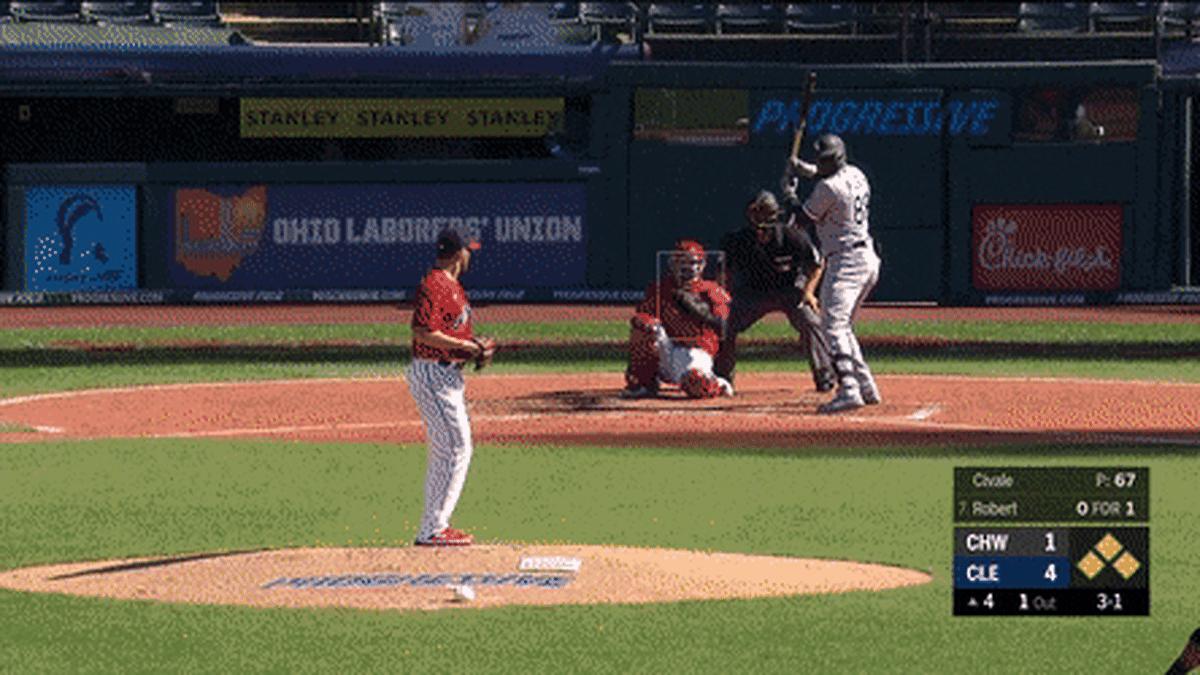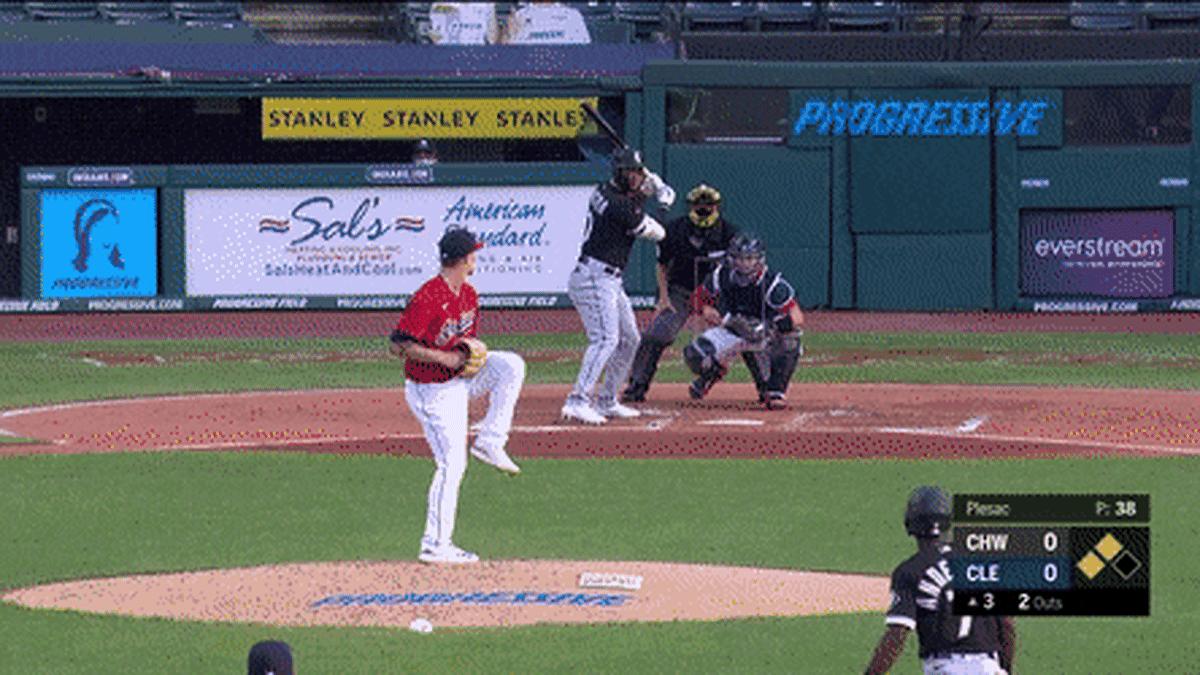Swing-happy White Sox prone to exposure

The White Sox are a young team, or at least, they have a young core. We should expect some growing pains. When fully healthy, their starting 9 has an average age of 27. Veterans Yasmani Grandal and Edwin Encarnación certainly bring this average up, but their experience is part of the value they provide to the 2020 team.
What we see from this young core is hyper-aggression. They want to put a bat on every pitch that they can, to a fault. Just because you can put the bat on a pitch does not mean you have to.
White Sox management and the team's fans can only dream on the potential of the Yoán Moncada, Eloy Jiménez and Luis Robert trio for years to come. When supplemented by homegrown talents such as Tim Anderson, Andrew Vaughn and Nick Madrigal, there's two-thirds of a lineup for at least the next four seasons.
However, aside from Vaughn, the other five are here and ready to impact the major league team now. There is no doubt that they have shown us this immense potential. Robert's first hit was 115.8 mph. Jiménez has the sixth-highest barrel rate in baseball so far in 2020. Moncada boasted a 141 wRC+ in his second full season in the majors last year.
The best way to describe them this year is ... solid, but not living up to expectations.
Moncada (122 wRC+), Jiménez (109) and Robert (110) have done well enough to have the White Sox around .500 through a third of the season, but there's so much more to be accomplished.
One hitting aspect that is holding them (and this team) back is plate discipline. It isn't limited to these three, but the success of this team is likely largely predicated on their actions. And their production has been just adequate so far, as has the White Sox offense.
As of Friday, the Sox have the third worst O-Swing% in MLB at 34.2%. Only the Orioles and Red Sox are slightly worse. The league-best Angels sit at 24%.
However, O-Swing won't tell the whole story. A good proxy for overall plate discipline is Z-Swing% minus O-Swing% (percent of pitches swung at in the zone minus percent of pitches swung at out of the zone). At 32.6%, the Sox are a tick below the Cubs for the worst in baseball. The Orioles on the other hand, the team with the worst O-Swing% in baseball, also have the third-highest Z-Swing% with the league's second best wRC+ at 119. Thus, if you want chase that many pitches, you also have to be equally as aggressive and effective with pitches to hit in the zone.
The Cubs are actually a good comparison for the White Sox so far. The two teams have roughly the same Zone%, 40.4, which is 28th in baseball. Both teams have dangerous lineups that opposing pitching does not want to give in to. The Cubs have dealt with this reality much better, as they are only swinging at 28.6% of pitches out of the zone. This is part of the reason why the Cubs have an offense that has been 9% better. Their higher K% stems from an issue of not swinging enough at pitches in the zone.
Other glaring plate discipline stats for the White Sox are the fact that they're 26th in Contact%, 26th in BB% and have the third highest SwStr%. What become reality for this offense is that too many home runs are solo shots, and extra base hits in general yield little without constant threats on base.
When we look at individual players, we actually see some O-Swing improvements from last season. Tim Anderson is down about 5% from a rate that was the fifth-highest in baseball last year. Other improvements have come from James McCann (8%), Nomar Mazara (7%) and Leury García (4%).
While Abreu and Grandal have essentially the same tendencies as last year, some glaring O-Swing% increases are from Jiménez (5%), Encarnación (3%) and Moncada (3%).
The most egregious O-Swing contributor thus far is pretty obvious if you watch the games, and that's Robert. The tantalizing rookie has still been a 10% above-average offensive contributor in light of his "swing-at-pretty-much-everything" approach. He swings more than any player in baseball. Sometimes I wonder why pitchers ever throw him anything in the zone.
The fact of the matter is, Robert is going to begin to see fewer and fewer pitches in the zone as pitchers adjust. While he's been lauded for his ability to make adjustments on the fly at such a young age, and this will be tested even more in the near future. He needs to get himself into better counts to see better pitches to hit with these kinds of hyper-aggressive tendencies.
The problem with the early showing of Encarnación is that much of his value to the Sox was his patient offensive profile that could ideally balance out the free-swinging youngsters (plus Anderson and Abreu). This is also true of Grandal, but his offensive limitations thus far have been a struggle to square balls in the zone. His 24 O-Swing% has stayed consistent from last season, and was the 15th-best among qualified hitters.
Grandal represents the only regular in the Sox lineup that has a below-average O-Swing% (roughly 30%). McCann and Danny Mendick have seen somewhat regular ABs thus far with sub-30% rates, but they weren't part of the projected opening day regular 9. This is also in a year where hitters across the league have not been swinging as much. Z-Swing is down 1.6%, and O-Swing is down 1.9%. As Craig Edwards of FanGraphs explained, "hitters are still getting their bearings." White Sox hitters haven't been aligned with the league's trend, but we can hope that their offensive production picks up as the rest of the league's should as well.
For comparison, the Angels, the club with the league's lowest O-Swing%, have only 2 regulars (Albert Pujols and Shohei Ohtani) with rates of more than 30%. They also have five regulars with rates 21% or lower.
Other offensive issues that won't exactly show up in the plate discipline numbers have to do with hitting approach; a concept more challenging to quantify, but a poor one can be easily identified when watching the game. Doesn't it seem like this team is constantly in two-strike counts and often very quickly? After digging a little deeper, there is a big problem here.
The White Sox have seen the most 0-2 and 1-2 counts of any team in the league. They have the second-highest percentage (10.8) of pitches seen in these counts, only trailing St. Louis (11.7%) who has played just a handful of games thus far. Houston has seen the least amount of these counts with 255, or 8.9%. Remember, they have the 28th-highest Zone%. They are getting themselves out.
Among individual players, Robert has the fourth-highest percentage of 0-2 or 1-2 counts at 14.3% (min. 100 pitches seen). McCann is second-highest at 12.3%, followed by Adam Engel (11.8%), Jiménez (11.6%) and Encarnación (11.4%).
To compound this issue, when Sox are good enough to obtain count leverage, they are great at squandering it. With an 0-0 count or when they are ahead in the count, the Sox have the worst swing decisions in the league. More specifically, they have the most swings in what is considered the "chase" and "waste" parts of the zone.
For example, it's hard to fathom how bad of an approach this is by Abreu. The White Sox had a good pitcher on the ropes in the first inning, and he has Eloy behind him. He needs to be looking for a pitch that he can get to the outfield for at least a sac fly. With a 3-1 count, he needed to make Aaron Civale to come to him.
Instead, we get this:

Yes, Civale also has a two-seamer with good arm-side run in his arsenal, but even if what Abreu saw ended up being that pitch and it's taken for a strike, we still have a full count, and maybe there's an opportunity for Moncada at first to be off with the pitch.
On the next pitch, Abreu grounded into a 6-4-3 double play.
Prior to this at-bat, a previous blunder from Abreu prompted this tweet.
Can someone tell Abreu that walks are in fact, good.
— Luke Smailes (@lukesmailes4) August 1, 2020
They have swung at 52 of these pitches, or 1.8%. That's not good. If you include the shadow zone that's away from the middle of the plate (zones 12 and 18 below), they have the fifth-highest swing rate, at 6.7%.

Here's another chase against Civale that would have been ball four on essentially the same pitch as Abreu.

And finally, for Moncada, there's just absolutely no reason to swing at this first pitch. None. These are all approach breakdowns for these uber-talented hitters.

A slight positive is the White Sox they are better than I predicted when looking at only 2-0, 3-0 and 3-1 counts. They are exactly average in terms of getting to these counts, but are also exactly average at swinging at pitcher's pitches (the same waste, chase, and shadow criteria as before) in them. Interestingly, Houston, while able to avoid two-strike counts the best, also has the worst swing decisions when they do get this extreme count leverage.
Hitting is hard. Hitting in the major leagues exponentially harder. Anyone that watches the Pitching Ninja pitch overlay GIFs on Twitter understands this. However, this data tells us a story about what can cause this offense's shortcomings. Pitchers are going to pick up on these tendencies even more as the season goes on, and that low Zone% will get even smaller.
With count leverage, pitches in the "heart" of the zone need to be attacked, and everything else needs to be taken. It can be easier said than done, but the returns the club is currently getting tell us that this probably isn't even part of their mindset. "Selective aggressiveness" is what we need to start seeing.
It's a fool's errand to believe that Jiménez and Robert will suddenly become 15% walk rate hitters, but we need to start seeing some improvement. I do think that will come, as Robert likely won't maintain a 62 Swing% through his career. Nonetheless, good pitching is going to start exposing this offense even more if the improvement doesn't happen sooner rather than later.
